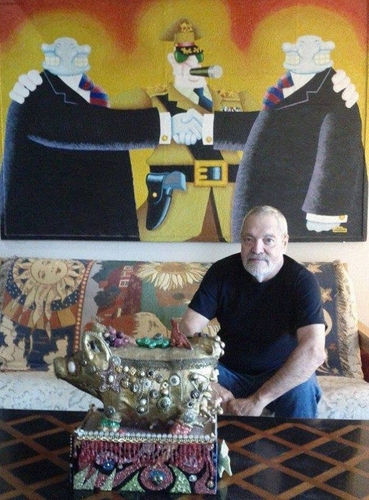WILMINGTON — Abigail and William Gerdts, leading scholars in the history of American Art, recently presented a collection of 176 underground comic books to the National Gallery of Art in Washington, D.C
The gift marks the first time that comic books have been added to the permanent collection.
Offering a snapshot of the era, the Gerdts' collection showcases the heyday of these counterculture publications, which were born in response to the Comics Code Authority's restrictions on content relating to violence, sexuality, and drug use in mainstream publications.
The collection begins with seminal issues of Zap Comix (founded by Robert Crumb in San Francisco in 1967) and ends with Arcade: The Comics Revue (founded by Art Spiegelman), offering a broad account of the underground comics movement from 1964 to 1977.
Included in the collection are the works of Skip Williamson (Bijou Funnies, 1968) who works out of his home and studio in Wilmington, where he continues to create comic art as well as large-scale, colorful, satiric paintings depicting what he calls social abominations and political skullduggery.
Williamson's work is also part of the permanent collection at the Ryerson Library at the Art Institute of Chicago, and his art has been shown at the Tate Modern (London), the Corcoran Galley (Washington D.C.), and the New York Cultural Center, as well as many other galleries and venues throughout the United States and the world.
“Comic book art is an indigenous American art form long influential in the Fine Art World,” Williamson said. “I'm very happy that the first comics acquired by the National Gallery are not the super-guys in tights who appeal to the adolescent mind and are fodder for mindless cinematic extrapolation. What we produced was Art with a capital 'A.'
“This feat was accomplished by the underground cartoonists connecting their unbridled joy of creating comic strips – free of the extraneous influence of commerce – with the unrestrained manifestation of their esoteric insights and exotic delusions.”
